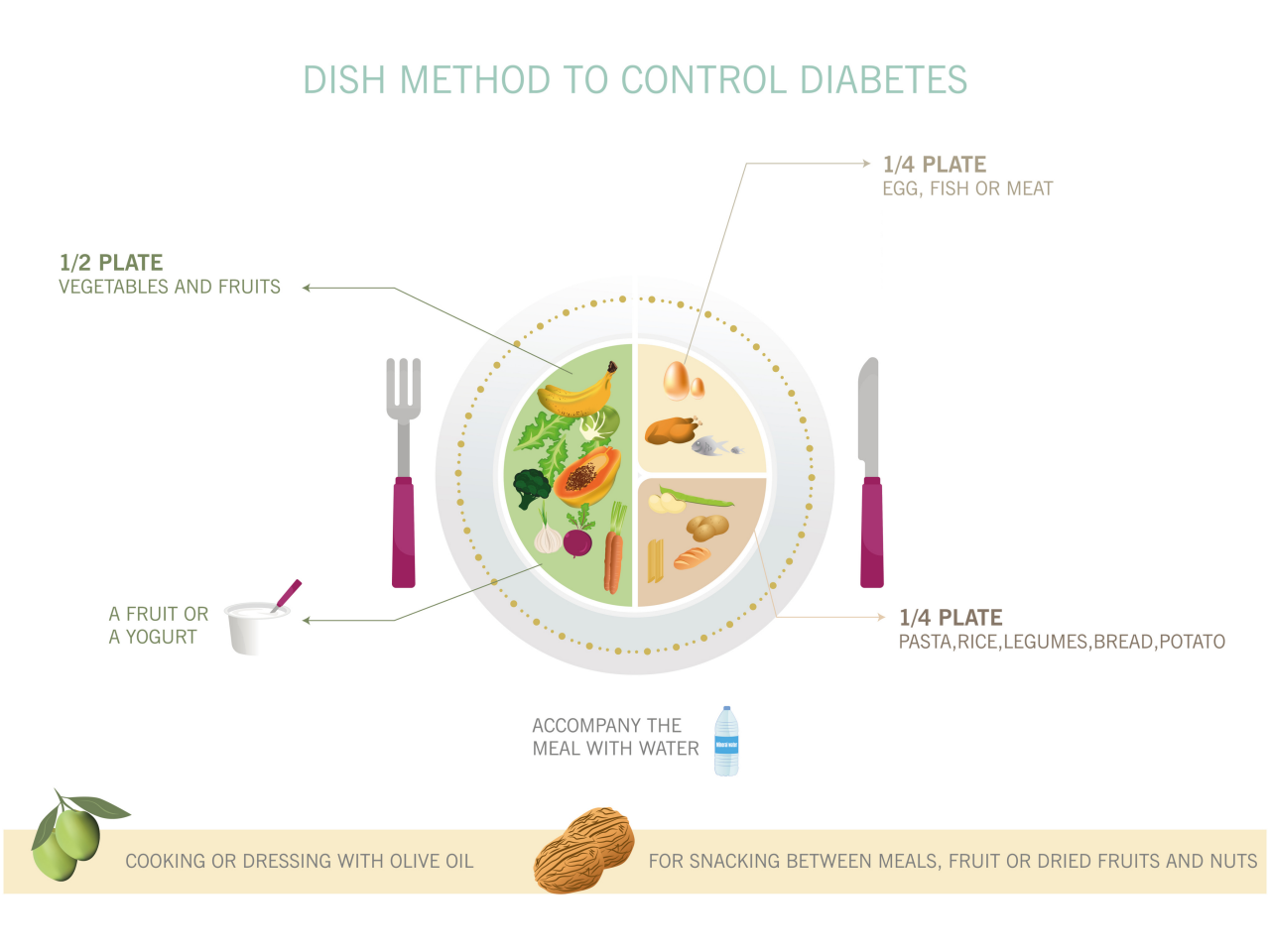
Managing diabetes can feel overwhelming, especially when it comes to making the right food choices.
The good news is that there’s a simple way to build healthy, balanced meals that help manage blood sugar levels – without complex carb counting or measuring cups. Using the Diabetes Plate Method makes meal planning easier and more effective.
The Diabetes Plate Method is a straightforward approach that helps you build balanced meals using a 9-inch plate. By dividing your plate into specific food groups – nonstarchy vegetables, protein, and carbohydrates – you can manage your blood sugar more easily.

Start by loading half your plate with nonstarchy vegetables like cucumbers, leafy greens, broccoli, green beans, and peppers.
These veggies are high in fiber, helping you feel fuller for longer and keeps your blood sugar stable. More fiber means fewer chances of blood sugar spikes or dips.
On top of that, they’re full of essential vitamins and minerals to support your overall health.
Dedicate 1/4 of your plate to protein. Proteins are key to stabilizing blood sugar, as it slows the rise in blood sugar after eating.
You can choose from options like fish, chicken, or eggs. Plant-based proteins such as tofu and tempeh are also great choices.
Fill the remaining 1/4 of your plate with carbs – yes, carbs!
Contrary to popular belief, carbohydrates are important in a diabetes-friendly meal. Carbs provide essential energy, and when balanced with fiber and protein, they can be part of a healthy diabetes-friendly meal plan. The key is focusing on high-quality carbs like whole grains and limiting refined carbs like white bread and sugary foods.
It’s also important to watch your portion sizes. Too many carbs can cause your blood sugar to spike, while too few can lead to low blood sugar. Some great carbohydrate options include quinoa, brown rice, whole wheat pasta or bread, and beans.
By focusing on whole, unprocessed carbs and pairing them with fiber and protein, you can better manage your blood sugar and feel more energized throughout the day.
To round out your meal, choose water or a low-calorie drink. These won't affect your blood sugar and will help keep you hydrated.
It's best to steer clear of sugary drinks because they can cause blood sugar spikes. For variety, try unsweetened tea or sparkling water as alternatives.
Incorporating the Diabetes Plate Method into your daily routine doesn’t have to be complicated. Here are several simple tips to help you get started:
- Prep your veggies in advance: Wash and chop a variety of nonstarchy vegetables ahead of time, so you can easily add them to any meal without extra effort.
- Cook proteins in bulk: Grill or bake chicken, fish, or plant-based proteins like tofu in larger batches. This way, you’ll always have a quick, healthy protein ready to go.
- Try new carb options: Swap out refined carbs for whole grains like quinoa, brown rice, or whole wheat pasta. Experiment with different combinations to keep meals interesting.
- Plan balanced snacks: Apply the Diabetes Plate Method principles to snacks by pairing protein-rich foods like nuts or cheese with fiber-rich veggies or a small portion of fruit.
- Use a smaller plate: If portion sizes are a challenge, try using a smaller plate to keep meals balanced without overfilling.
- Apply these tips on the go: When eating out, ask for extra vegetables or a side salad to fill half your plate. If possible, swap starchy sides for nonstarchy veggies, and opt for grilled or baked proteins instead of fried.
For delicious, balanced meal ideas that follow the Diabetes Plate Method, check out these recipes from the American Diabetes Association.
With the Diabetes Plate Method, you can take control of your meals and make diabetes management easier. Start small, stay consistent, and watch how balanced eating improves your energy and overall well-being.
We’re here to help you get started and answer your questions. The Blue Cross and Blue Shield of North Carolina Nurse Support Program connects our health insurance plan members to dietitians and other professionals at no additional cost.
Blue Cross and Blue Shield of North Carolina does not discriminate on the basis of race, color, national origin, sex, age or disability in its health programs and activities. Learn more about our non-discrimination policy and no-cost services available to you.
Information in other languages: Español 中文 Tiếng Việt 한국어 Français العَرَبِيَّة Hmoob ру́сский Tagalog ગુજરાતી ភាសាខ្មែរ Deutsch हिन्दी ລາວ 日本語
© 2025 Blue Cross and Blue Shield of North Carolina. ®, SM Marks of the Blue Cross and Blue Shield Association, an association of independent Blue Cross and Blue Shield plans. All other marks and names are property of their respective owners. Blue Cross and Blue Shield of North Carolina is an independent licensee of the Blue Cross and Blue Shield Association.


